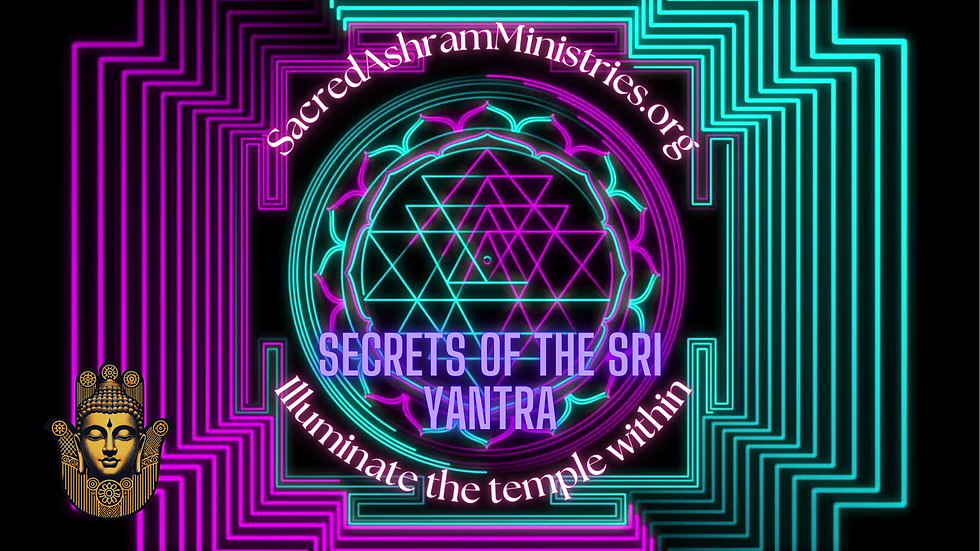The Importance of Proper Breathing During Meditation: Insights from Yoga Techniques
- Jul 1, 2024
- 3 min read
Updated: Mar 7

Meditation is a practice that calms the mind, reduces stress, and enhances overall well-being. An often overlooked but vital component of effective meditation is proper breathing. Breathing techniques, when correctly applied, can significantly deepen the meditative experience, offering greater mental clarity and physical relaxation. Various yoga techniques offer a range of breathing practices that can enhance meditation. This article explores the importance of proper breathing during meditation, drawing examples from different yoga traditions.
The Science of Breath and Meditation
Breathing is a bridge between the body and the mind. The autonomic nervous system controls our breath, which has two branches: the sympathetic nervous system (responsible for the "fight or flight" response) and the parasympathetic nervous system (responsible for the "rest and digest" state). Proper breathing techniques activate the parasympathetic nervous system, promoting relaxation and reducing stress.
Pranayama: The Breath of Life
Pranayama is a fundamental aspect of yoga, focusing on controlling the breath. Derived from Sanskrit, "prana" means life force, and "yama" means control. Pranayama techniques are designed to enhance the flow of prana within the body, thereby improving mental and physical health. Here are a few pranayama techniques that can deepen meditation:
1. Ujjayi Breathing (Ocean Breath)
Ujjayi breath involves inhaling and exhaling through the nose while constricting the throat slightly, creating a sound reminiscent of ocean waves. This technique calms the mind and warms the body, making it easier to maintain focus during meditation.
2. Nadi Shodhana (Alternate Nostril Breathing)
Nadi Shodhana involves alternating the breath between the left and right nostrils, balancing the body’s energy channels. This technique reduces anxiety, enhances concentration, and promotes a sense of inner peace, which is conducive to deep meditation.
3. Kapalabhati (Skull Shining Breath)
Kapalabhati consists of short, forceful exhales followed by passive inhales. This practice energizes the body, clears the mind, and helps expel toxins, preparing one for a focused and invigorating meditation session.
Breathing in Different Yoga Traditions
Various yoga traditions incorporate unique breathing techniques that complement their meditation practices:
Hatha Yoga
Hatha yoga emphasizes slow, deep breathing, often synchronized with physical postures (asanas). Deep, diaphragmatic breathing in Hatha yoga helps stretch and relax the body, creating an optimal state for meditation. Techniques like Dirga Pranayama (Three-Part Breath) teach practitioners to fill their lungs completely, enhancing oxygen flow and promoting relaxation.
Kundalini Yoga
Kundalini yoga focuses on awakening the dormant spiritual energy at the base of the spine through breath control, mantras, and movement. Breath of Fire, a rapid and rhythmic breath, is a staple in Kundalini yoga. It increases vitality, clears the mind, and raises energy levels, facilitating a powerful meditative experience.
Vinyasa Yoga
Vinyasa yoga synchronizes breath with movement in a flowing sequence. Ujjayi breath is commonly used in Vinyasa yoga to maintain rhythm and focus. This synchronization cultivates a meditative state throughout the practice, enhancing mindfulness and concentration.
Benefits of Proper Breathing During Meditation
Integrating proper breathing techniques into meditation offers numerous benefits:
1. Enhanced Focus:** Controlled breathing helps anchor the mind, reducing distractions and enhancing concentration.
2. Reduced Stress:** Deep, rhythmic breathing activates the parasympathetic nervous system, reducing stress and promoting relaxation.
3. Improved Emotional Regulation:** Consistent breathing patterns help stabilize emotions, making it easier to manage anxiety and mood swings.
4. Increased Energy:** Certain breathing techniques, like Kapalabhati, boost energy levels, making the mind more alert and receptive during meditation.
5. Deeper Meditation:** Proper breathing techniques deepen the meditative state, leading to a more profound and enriching experience.
Proper breathing is a cornerstone of effective meditation. Techniques from various yoga traditions, such as Pranayama, Ujjayi, and Nadi Shodhana, offer invaluable tools for enhancing the meditative experience. By incorporating these practices, one can achieve greater mental clarity, emotional stability, and overall well-being. Whether you are new to meditation or a seasoned practitioner, mastering the art of breath can transform your practice and unlock the full potential of meditation.









Comments